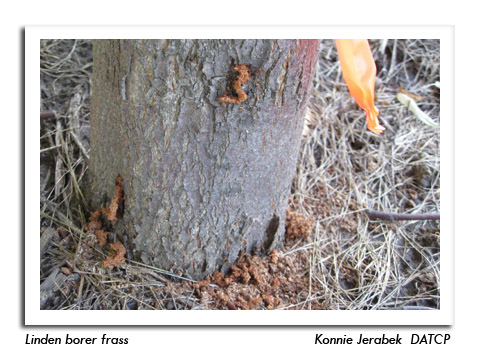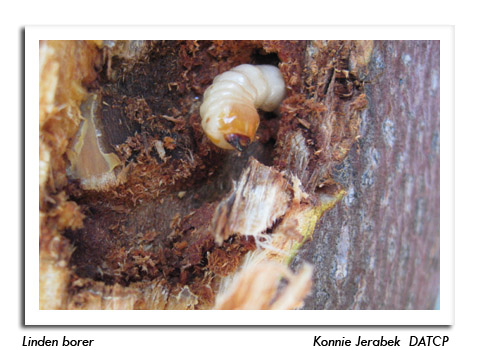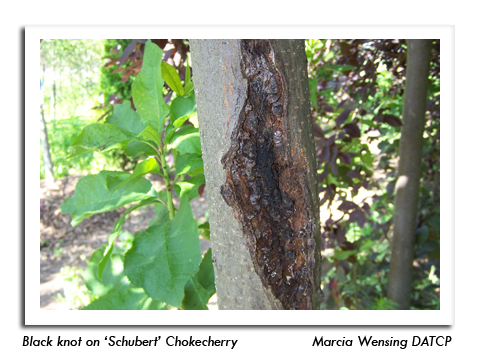
 |
|
|
Nursery & Forest
Volume 57 Number 12 Date 06/28/2012 EMERALD ASH BORER - An emerald ash borer (EAB) beetle was collected on June 22 from residents in the City of Janesville. The specimen was confirmed as EAB on Monday, June 25. In addition, at least one tree on the property was found to be heavily infested. Emerald ash borer has also been detected for the first time on state-owned lands. Beetles were captured on two separate survey traps in the Richard Bong State Recreation Area in Kenosha County and verified as EAB last Friday. Visitors to RBSRA will no longer be allowed to remove firewood from the park. The tree-killing EAB has now been found in 11 Wisconsin counties: Brown, Crawford, Kenosha, La Crosse, Milwaukee, Ozaukee, Racine, Vernon, Walworth, Washington and Waukesha. --Mick Skwarok, DATCP EAB Outreach Specialist EASTERN SPRUCE GALL ADELGID - The pineapple-shaped galls that form when needles are injured by adelgid feeding were conspicuous on Black Hills spruce in Dunn and Polk counties. Eventually the gall dries, turns brown, splits open, and the mature nymph inside emerges, usually from mid-August to October. Dormant oil treatments are not effective against this pest at this time of year, but should instead be made from October-November, or in April. LINDEN BORER - Larvae and sawdust-like frass were found on 3-5 inch diameter Littleleaf Linden trees in Polk and Shawano counties. This destructive wood-boring beetle attacks both vigorous and stressed nursery trees, causing structural weakening that often results in broken trunks or limbs. An early symptom of attack is thinning of the tree canopy. Immediate removal and destruction of infested nursery stock is required to prevent further spread. BLACK KNOT - A light infection on 'Schubert' chokecherry trees was noted in Brown County earlier this week. This common fungal disease is characterized by irregular, black swollen galls or "knots" which form on branches and can range in size from ½ inch to one foot long. Shoots and branches bearing knots should be pruned in winter or early spring, before fungal spores are released. Multiple infections of black knot reduce tree vigor and eventually cause decline. Nursery trees with knots on the trunk must be removed from sale. LEAF SCORCH - A wide assortment of nursery plants across the state are exhibiting leaf scorch, characterized by browning of the leaf margins and yellowing or darkening of tissues between the primary veins. This physiological disorder is common in trees and shrubs that are stressed due to drought, transplanting, nutrient deficiency, inadequate space for root growth and soil compaction. Affected plants generally recover once the stress factor has been resolved. --Liz Meils, DATCP Nursery Inspector 




|
|
|